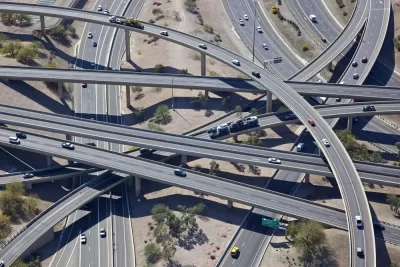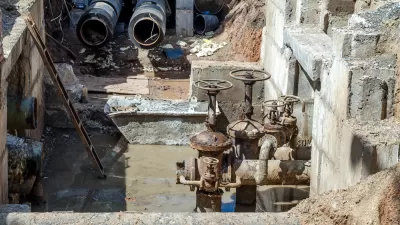Analysis from the Center for American Progress breaks down the fallout in funding and job losses to the state level, if policies proposed in the Trump Administration's infrastructure plan and its proposed budget for fiscal year 2018 are adopted.

Kevin DeGood, director of infrastructure policy at the Center for American progress, surveys the information available about the Trump Administration's infrastructure plan (though the article was published previous to the infrastructure plan leak earlier this week), to make some estimation about the potential impacts on the Highway Trust Fund.
DeGood's assessment is that "President Trump’s vision for infrastructure involves deep cuts to core programs." Specifically, "[t]he biggest and most harmful cut would be to the Highway Trust Fund (HTF), which provides funding for thousands of highway and public transportation projects each year."
After explaining specifics of the Trump Administration's policy proposals for the Highway Trust Fund, DeGood shares a list of estimated highway and transit funding cuts and job losses by states, estimated for the years 2021 to 2027.
DeGood concludes with a call to action after deeming the Trump Administration's proposed infrastructure cuts unacceptable. In a counter proposal, DeGood argues that the federal government "should spend at least $1 trillion above baseline over the next 10 years" on projects ranging from "highways, public transportation, and aviation to affordable housing, water, clean energy, child care facilities, and rural broadband…"
FULL STORY: Highway Trust Fund Cuts by State

Planetizen Federal Action Tracker
A weekly monitor of how Trump’s orders and actions are impacting planners and planning in America.

Map: Where Senate Republicans Want to Sell Your Public Lands
For public land advocates, the Senate Republicans’ proposal to sell millions of acres of public land in the West is “the biggest fight of their careers.”

Restaurant Patios Were a Pandemic Win — Why Were They so Hard to Keep?
Social distancing requirements and changes in travel patterns prompted cities to pilot new uses for street and sidewalk space. Then it got complicated.

Albuquerque Route 66 Motels Become Affordable Housing
A $4 million city fund is incentivizing developers to breathe new life into derelict midcentury motels.

DC Area County Eliminates Bus Fares
Montgomery County joins a growing trend of making transit free.

Platform Pilsner: Vancouver Transit Agency Releases... a Beer?
TransLink will receive a portion of every sale of the four-pack.
Urban Design for Planners 1: Software Tools
This six-course series explores essential urban design concepts using open source software and equips planners with the tools they need to participate fully in the urban design process.
Planning for Universal Design
Learn the tools for implementing Universal Design in planning regulations.
Heyer Gruel & Associates PA
JM Goldson LLC
Custer County Colorado
City of Camden Redevelopment Agency
City of Astoria
Transportation Research & Education Center (TREC) at Portland State University
Camden Redevelopment Agency
City of Claremont
Municipality of Princeton (NJ)





























